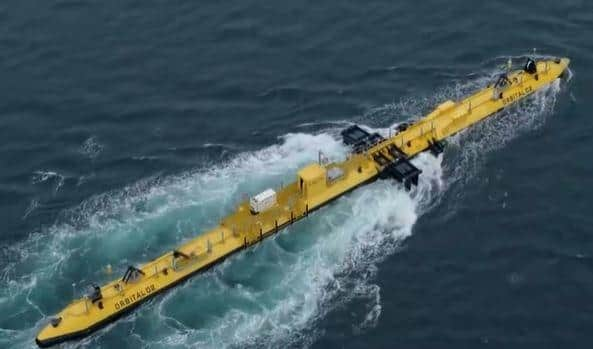Tidal energy project launched aiming to make Scotland home to the world's largest tidal turbine blades
The Princess Royal launched the project aimed at maximising tidal energy generation at the University of Edinburgh’s FastBlade facility.
Anne, who is Chancellor of the University of Edinburgh, met staff on Tuesday at the institution’s testing facility for the £8.7 million MAXBlade project.
Advertisement
Hide AdAdvertisement
Hide AdThe €10 million [£8.8m] project – funded by the European Union and UK Research and Innovation – aims to deliver a range of innovations to improve the performance of tidal turbines and reduce costs. It will see Scotland become home to the longest turbine blades in the world.


Researchers will investigate the full lifecycle of tidal turbine blades, from materials, manufacture and operation, to decommissioning and recyclability, with the long-term aim to ensure the European composite sector becomes the international leader in tidal blade manufacture.
The project plans to increase the area harnessed by Scottish tidal technology company Orbital Marine Power to generate power – known as the rotor swept area – by 70 per cent, to more than 1,000 square metres.
MAXBlade will increase the length of the turbine blades from 10 to 13 metres. The blade length has the single greatest impact on reducing the cost of tidal energy.
Modelling by the university’s Institute of Energy Systems estimates £40bn could be generated for the UK economy by harnessing wave and tidal energy.
The project will involve a two-year design and development phase, followed by an 18-month build, during which blades will undergo advanced structural testing at FastBlade.
Innovations from MAXBlade will be integrated with findings from its sister project, FORWARD2030, to enable large-scale production of Orbital’s O2 turbine technology. This will pave the way to the tidal energy sector making significant contributions towards Europe’s energy systems, energy security and industrial development by 2030 and beyond to 2050.
The technology will then undergo two years of real-world testing at the European Marine Energy Centre (EMEC) in Orkney.
Advertisement
Hide AdAdvertisement
Hide AdAndrew Scott, chief executive officer at Orbital Marine Power, said: “Orbital is delighted to be involved with so many great partners on this truly cutting-edge project. MAXBlade will help deliver tidal energy into a future, low-carbon energy mix at lower costs while, at the same time, position UK and European businesses to benefit from long-term industrial opportunities that will come from this new, sustainable industry.”
Professor Conchúr Ó Brádaigh, head of school and chair of materials engineering at Edinburgh University, said: “The University of Edinburgh is delighted to be a partner in the MAXBlade project, where we will demonstrate the unique rapid testing capability of the FastBlade facility.
"This will help the tidal energy industry to de-risk their ongoing turbine developments and provide low-cost, reliable renewable energy to the grid. We will also lead the development of thermoplastic resins in MAXBlade and the circular economy roadmap needed for future tidal blade manufacturing and recycling.”
MAXBlade is led by TechnipFMC and includes Orbital Marine Power, Marasoft, TECNALIA, University of Edinburgh, EMEC, Laborelec and European Composites Industry Association.
Comments
Want to join the conversation? Please or to comment on this article.